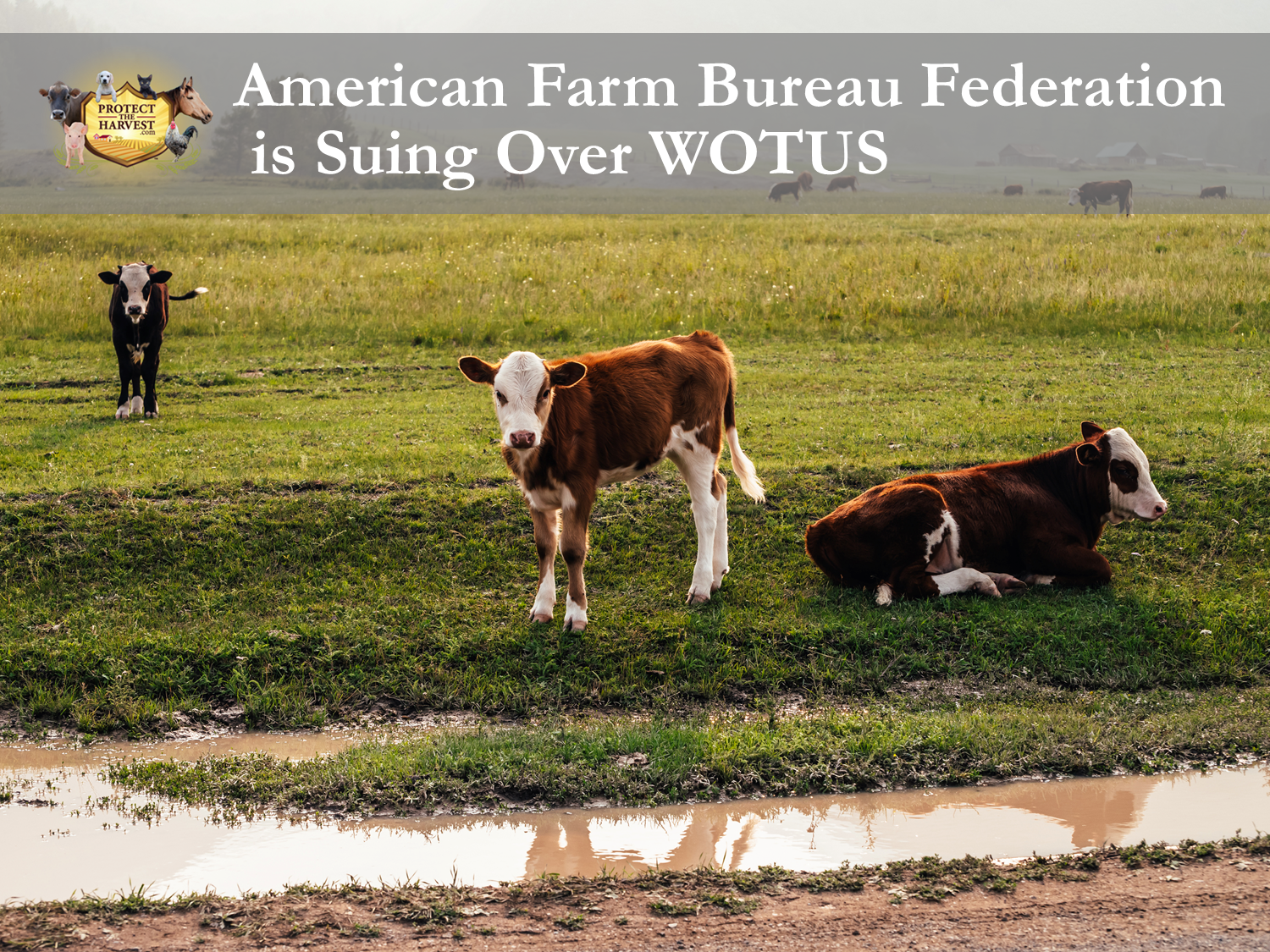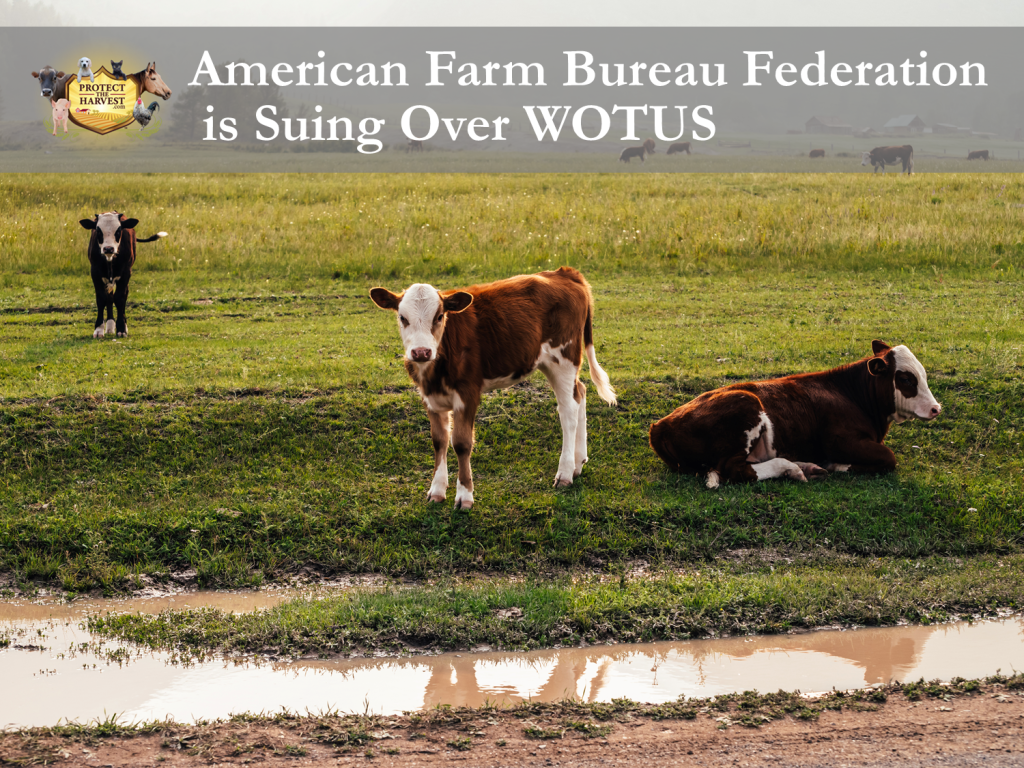
The ongoing battle over Waters of the United States (WOTUS) is certainly one of the most significant issues facing America today. WOTUS affects not only landowners, farmers, and ranchers, but every single person who relies on our nation’s agriculture and energy industries to provide day-to-day necessities.
In other words, WOTUS matters to everyone.
The central issue is the categorization of the various types of bodies of water in the US, and if they are “navigable,” which puts them under the jurisdiction of the Environmental Protection Agency (EPA). In areas where the EPA has jurisdiction, permits are required for any instance of “pollutant discharge,” defined by the Clean Water Act (CWA) as the “addition of any pollutant to navigable waters from any point source.”
Unless it is stopped in court, a recent rule change by the Biden administration will subject every ditch, slough, and puddle to EPA rules.
Punishment
Committing an offense to the CWA, even unintentionally, is no small thing.
Under the CWA, a first-time offense for negligently discharging a pollutant into a WOTUS is punishable by up to $25,000 per day in fines and up to one year in prison; for knowingly discharging a pollutant without a permit is punishable by up to $50,000 per day and up to three years in prison, per violation. In addition, the EPA can also impose civil penalties of up to $64,618 per discharge, per day, and offense.
Lawsuit Filed By Diverse Group
The American Farm Bureau Federation, along with 17 other organizations, has filed suit against the Environmental Protection Agency and the Army Corp of Engineers to challenge the current redefinition of WOTUS and the myriad of implications that would come with it.
“The EPA doubled down by expanding the significant nexus test, which comes down to a subjective determination of whether the federal government can regulate large areas of farmland miles from the nearest ‘navigable’ water,” stated AFBF President Zippy Duvall.
The lawsuit describes in detail the effects the implementation of the latest definition of WOTUS would have.
“Instead of providing much-needed clarity to the regulated community, however, all the Rule makes clear is that the Agencies are determined to exert CWA jurisdiction over a staggering range of dry land and water features—whether large or small; permanent, intermittent, or ephemeral; flowing or stagnant; natural or manmade; interstate or intrastate; and no matter how remote from or lacking in a physical connection to actual navigable waters. Under the Rule, Plaintiffs’ members will constantly be at risk that any sometimes-wet feature on their property will be deemed WOTUS by the Agencies using vague and unpredictable standards—making normal business activities in that area subject to criminal and civil penalties.”
“The Rule imposes impossible—and unpredictable—burdens on land owners, users, and purchasers. It requires them to assess not only their land, but also vast expanses of land beyond their own holdings, using multiple vaguely defined connections to potentially remote features, to determine if their land is regulated under the CWA. Those burdens result from the Agencies’ predicating jurisdiction over enormous swaths of the country on their misreading of a single concurring opinion in Rapanos that articulated a view rejected by the other eight justices. The consequence is a sweeping and unwieldy regulation that leaves the identification of jurisdictional waters so opaque, uncertain, and all-encompassing that Plaintiffs and their members and clients cannot determine whether and when the most basic activities undertaken on land will subject them to drastic criminal and civil penalties; and that strips the States of their primary authority and traditional powers over land and waters that Congress intended them to retain.”
Lack of Clear Definition = Lawsuits and Party Politics
The lack of a clear definition of navigable waters has resulted in decades of litigation over a definition that has fluctuated with legal interpretation and party politics. The long and confusing history of WOTUS redefinition has been a policy shell game that has left American producers in a precarious position as they work to provide for our nation.
Background
The Federal Water Pollution Control Act was enacted in 1948, and in 1972, the Clean Water Act (CWA) expanded and reorganized the 1948 Act to give federal jurisdiction to the EPA and the Army Corps of Engineers (COE) over “waters of the United States.”
The 1948 Act stated:
“The Administrator shall, after careful investigation, and in cooperation with other Federal agencies, State water pollution control agencies, interstate agencies, and the municipalities and industries involved prepare or develop comprehensive programs for preventing, reducing, or eliminating the pollution of the navigable waters and ground waters and improving the sanitary condition of surface and underground waters. In the development of such comprehensive programs, due regard shall be given to the improvements which are necessary to conserve such waters for the protection and propagation of fish and aquatic life and wildlife, recreational purposes, and the withdrawal of such waters for public water supply, agricultural, industrial, and other purposes.”
According to the EPA website, the 1972 changes did the following:
- Established the basic structure for regulating pollutant discharges into the waters of the United States.
- Gave EPA the authority to implement pollution control programs such as setting wastewater standards for industry.
- Maintained existing requirements to set water quality standards for all contaminants in surface waters.
- Made it unlawful for any person to discharge any pollutant from a point source into navigable waters, unless a permit was obtained under its provisions.
- Funded the construction of sewage treatment plants under the construction grants program.
- Recognized the need for planning to address the critical problems posed by nonpoint source pollution.
However, neither the CWA nor its predecessor clearly defined what exactly was included as “navigable water.”
Army Corps of Engineers Definition
In 1986, the Army Corps of Engineers defined WOTUS, which served as a basis for subsequent litigation. The 1986 WOTUS definition is as follows:
1. All waters which are currently used, were used in the past, or may be susceptible to use in interstate or foreign commerce, including all waters which are subject to the ebb and flow of the tide;
2. All interstate waters including interstate wetlands;
3. All other waters such as intrastate lakes, rivers, streams (including intermittent streams), mudflats, sandflats, wetlands, sloughs, prairie potholes, wet meadows, playa lakes, or natural ponds, the use, degradation, or destruction of which would or could affect interstate or foreign commerce including any such waters:
i. Which are or could be used by interstate or foreign travelers for recreational or other purposes; or
ii. From which fish or shellfish are or could be taken and sold in interstate or foreign commerce; or
iii. Which are used or could be used for industrial purposes by industries in interstate commerce;
4. All impoundments of waters otherwise defined as waters of the United States under this definition;
5. Tributaries of waters identified in paragraphs (a)(1) through (4) of this section;
6. The territorial seas; and
7. Wetlands adjacent to waters (other than waters that are themselves wetlands).
8. Waters of the United States do not include prior converted cropland.
Waste treatment systems, including treatment ponds or lagoons designed to meet the requirements of Clean Water Act are not waters of the United States.
Repeated WOTUS Redefinition Carries Into the 21st Century
Much of the WOTUS war has been fought since 2000 with the 1986 definition developed by the Army Corps of Engineers serving as a baseline. The late Supreme Court Justice Antonin Scalia influenced WOTUS favorably for agriculture writing in the 2006 Rapanos vs United States case that WOTUS refers only to relatively permanent, standing, or continuously flowing bodies of water and wetlands with a continuous surface connection to other relatively permanent waters.
However, in the same case, Justice Kennedy utilized a “significant nexus” test to define WOTUS, stating wetlands should be considered WOTUS if the wetland or water at issue significantly impacts the chemical, physical, and biological integrity of a traditionally navigable waterbody.
WOTUS Definition Expanded in 2015
In June 2015, the sitting presidential administration dealt a severe blow to agriculture by expanding the classification of navigable waters to include things like farm irrigation ditches, ephemeral drainages, isolated wetlands found on farms and ranches, agricultural ponds, groundwater, prior converted cropland, and even pools of rainwater.
Navigable Waters Protection Rule
Then, in 2020, the next presidential administration enacted the Navigable Waters Protection Rule (NWPR), returning to defining WOTUS the same way that Justice Scalia had in the Rapanos case. This move was celebrated by the agriculture industry.
American Farm Bureau Federation (AFBF) President, Zippy Duvall, stated in a recent column, “The 2020 Navigable Waters Protection Rule clarified what lands and waters were regulated and what was not. The definitions were easy to understand and allowed farmers, ranchers, and other landowners to determine if they needed a federal permit to improve their land.”
New Administration Backtracking
Predictably, the current presidential administration is now attempting to revert to the heavy-handed regulations and the egregious government overreach that comes with them, which were put forth by the presidential administration in power in 2015. On December 30, 2022, the final “Revised Definition of ‘Waters of the United States'” rule was announced and is set to be effective on March 20, 2023. The new rule specifically revokes the Navigable Waters Protection Rule.
Backtracked Rule Aligned with Egregious Executive Orders
The text of the proposed rule published in the Federal Register in December 2021, states, “This proposal is consistent with the Executive Order signed on January 20, 2021, on ‘Protecting Public Health and the Environment and Restoring Science to Tackle the Climate Crisis.’” We have written previously about the current administration’s 30X30 plan and its alignment with the UN’s globalist agenda. There is no doubt that the implementation of the latest definition of WOTUS would be devastating.
Bottom Line – The New Rule Will Be Devastating to Americans
Among the other plaintiffs in the lawsuit are mining and petroleum businesses, as well as construction, housing, and realty companies. This serves to demonstrate that the new rule if implemented, would have devastating effects across a spectrum of industries and aspects of American life—not just food security, but energy accessibility and housing availability as well.
The Clean Water Act’s seemingly noble initial intent to simply keep American waters clean has been fully weaponized against the very foundations of American prosperity.




